Chapter 3 - Introduction to charts
Lesson 3.5 - Support and Resistance Levels

Support and resistance is one of the basic concepts in knowing and measuring price movement. After we have clarified that prices are moving in clear peaks and troughs, we can now look more closely at areas where peaks and troughs are forming and this is what constitutes the concept of support and resistance.
Support: It is the troughs or the lowest levels from which the price bounce back. It is the level or region that falls below the market movement graph, where the interest in buying is strong, which pushes prices up when these levels are reached.
Some analysts prefer to define the bullish trend as resistance levels that are broken up, and support levels always succeed in supporting the price.
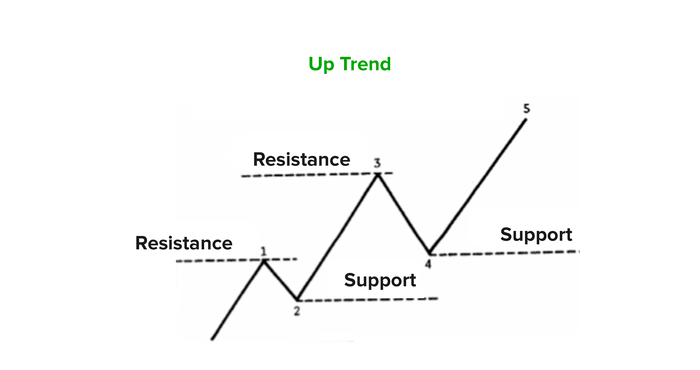
Resistance: - It is the peaks or the highest levels from which the price retracts. It is the level or region that is located above the market movement graph, where the interest in selling is strong, which pushes prices to fall back when these levels are reached.
While the downtrend is represented ass support levels tat are broken down, resistance levels always succeed in resisting price hikes and pushing them down again.
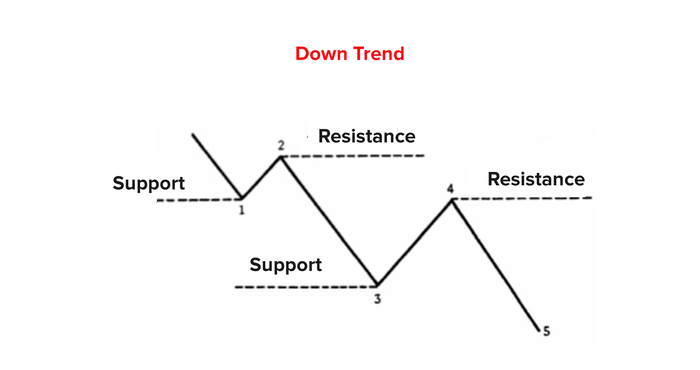
Thus, the side way trend is the stability of the support level in pushing the price back up, as well as the stability of the resistance level in pushing the price back down. Prices remain confined to this range until one of these limits is broken.
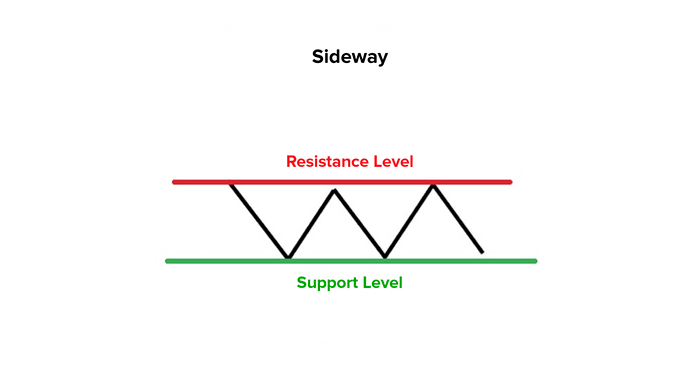
Reasons supporting the strength of the support or resistance level
After understanding the concept of support and resistance in general, we must clarify the most important reasons that may increase the value of the support or resistance level, and therefore, the technical analyst must examine it to identify the strength of these levels.
- The number of times a price touches a support or resistance line.
The more times a price touches a support or resistance level, the greater the technical value becomes.
- The time span of the support or resistance level.
The resistance or support level that extends for a longer period of time is stronger.
- The distance the price covers before touching the support or resistance line.
The larger distance covered by the prices before reaching a support or resistance level, the greater the possibility of a more stable support or resistance level against the prices.
- Volumes around the support or resistance level.
The higher the trading volume, when the price approaches the resistance or support level, the stronger this level will be. On the currency exchange, this can be characterized by the sizes of the price candles, i.e. the larger the candle sizes around the support or resistance level, the greater the value of this level is.
- The extent of the price rebound after touching the support or resistance levels.
The larger distance covered by the price after touching the support or resistance level means that the support or resistance level is more important.
A break of support or resistance level
When examining the graph, the technical analyst begins by determining the support and resistance levels. Then, he begins to determine the importance of each level based on the reasons that we have explained earlier. However, does that mean that prices cannot exceed the support and resistance levels?!, The answer is definitely not, so breaking the support and resistance levels is one of the most important concepts that must be recognized and well grasped because it sometimes represents one of the pillars of buying and selling opportunities.
A Break means that prices exceed the level. A break of a resistance level means prices have crossed this limit up, and a break of a support level means prices have crossed this level down.
Here, we have to answer the following question, when can we consider the break correct?!
Not every level breakthrough means a break, sometimes breakthroughs occur during trading and then prices bounce back in the opposite direction, and this does not mean a break.
Technical analysts define some of the criteria that they rely on for determining the break correctness, the most important of which are:
1- The closing price is above the resistance level, or below the support level.
2- Price stability is above the resistance level or the below the support level.
3- The breakthrough takes place amid high trading activity (large trading volume, or large price candle).
Reflection of Roles
The reflection of the roles between support and resistance is a basic concept in understanding support and resistances, and it means that after the support level is properly broken, the support level becomes above the price, and thus it becomes a resistance level.
When the resistance level is properly broken, the resistance level becomes below the prices, and thus begins to act as a support level below the market.
Looking at the following figure, which represents an uptrend in prices, notice how the break of the peak level (peak 1) turned into a support level later (support level 4).
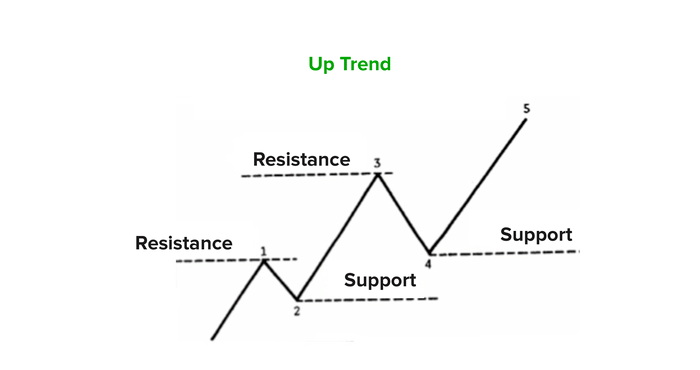
The following figure shows the reflection of the role of the support level to become a resistance level, during the downtrend trading, where the support level (support 1) is broken, it turned into a resistance level later when prices rebounded up at (resistance 4).
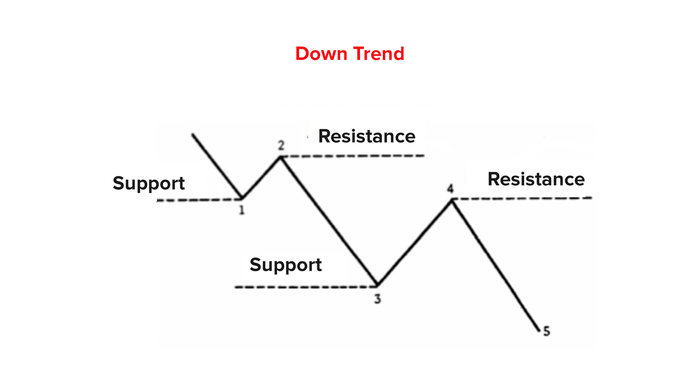
The matter is not over yet, as we have not explained everything about support and resistance, and perhaps the most prominent thing that we have not addressed is the psychology behind the concept of support and resistance, because it needs a large area of explanation and details.
However, we have clarified the basic principles necessary for understanding the mechanism of support and resistance levels and how it helps analysts and traders understand the market movement and help them a lot in determining the buying and selling orders as well.


 English
English





